- Administrator
- Albums and Singles
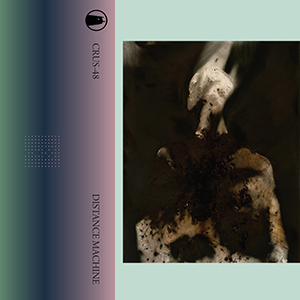 As Gog, Michael Bjella has developed a rather expansive catalog of bleak, heavy music, largely centered around guitar, noise, and extremely dark moods. On 2015’s collaborative record with Robert Skrzyński, Black Box Recordings, he shifted his focus to more abstract, noisier fronts. For his debut release as Distance Machine, he has mixed up the plans a bit more. Things are still oppressively dark for the most part but in a subtler, ambient context that reference classic works of the style while still showing Bjella’s own spin on it.
As Gog, Michael Bjella has developed a rather expansive catalog of bleak, heavy music, largely centered around guitar, noise, and extremely dark moods. On 2015’s collaborative record with Robert Skrzyński, Black Box Recordings, he shifted his focus to more abstract, noisier fronts. For his debut release as Distance Machine, he has mixed up the plans a bit more. Things are still oppressively dark for the most part but in a subtler, ambient context that reference classic works of the style while still showing Bjella’s own spin on it.
Throughout this self-titled tape, Bjella chooses to work largely from a palette of sampled strings and bassy electronics, coming across in many ways as a throwback to the early days of dark ambient.Hints of early Lustmord and solo works from Mick Harris and James Plotkin emanate from poorly lit cavernous walls of sound that Bjella is composing from within.
Slow, bowed strings sounds open "The More Severe the Initiation the More Sacred the Dance," solidifying the sound into a very dramatic one.Bjella layers strings on top of one another, building into a dense film score like atmosphere that is a little too commanding to function in that capacity.He uses the full 16+ minute duration to allow the darkness to unfold.Strings are pared with swirling electronics and more abstract, unrecognizable bits that eventually closes on a haunting, ghostly note.
The mood does not stay as monochromatic throughout, however."Lorri & Tess" features him stripping back some layers of the mix, allowing a bit more room to breathe amidst the heavier tones.Overall though, there is not as much darkness to be had here, with some actual gentle, delicate moments that pass through.By no means is it a relaxed piece of music, but it does show a drifting, less oppressive approach to Bjella’s style.
The final piece, "Send Us More Chuck Berry," in some ways is like a hybrid of the two preceding compositions.Throughout a span of 18 minutes he reintroduces the darker tinges, more understated and weaved throughout pleasant building waves of sound.The heavier bits are present, but restrained, and as the sound becomes denser, this gloom becomes more pronounced. He also takes multiple opportunities to pause, and then restart the piece with a slightly altered arrangement.It becomes a repetitive, yet captivating motif throughout.
There are certainly similarities in Distance Machine to Michael Bjella's other work under his own name and as Gog, but the shift to dark ambient sounds makes for a distinct identity.The feeling is entirely contemporary, but I certainly felt some influence (direct or indirect) from the short lived isolationism genre in the mid to late 1990s.As a fan of that from its inception, which was during my formative high school years, there was a warm bit of nostalgia for me throughout the bleak layers of sound.Even without my personal bias, however, it is an excellent piece of music from beginning to end.
Read More
- Administrator
- Albums and Singles
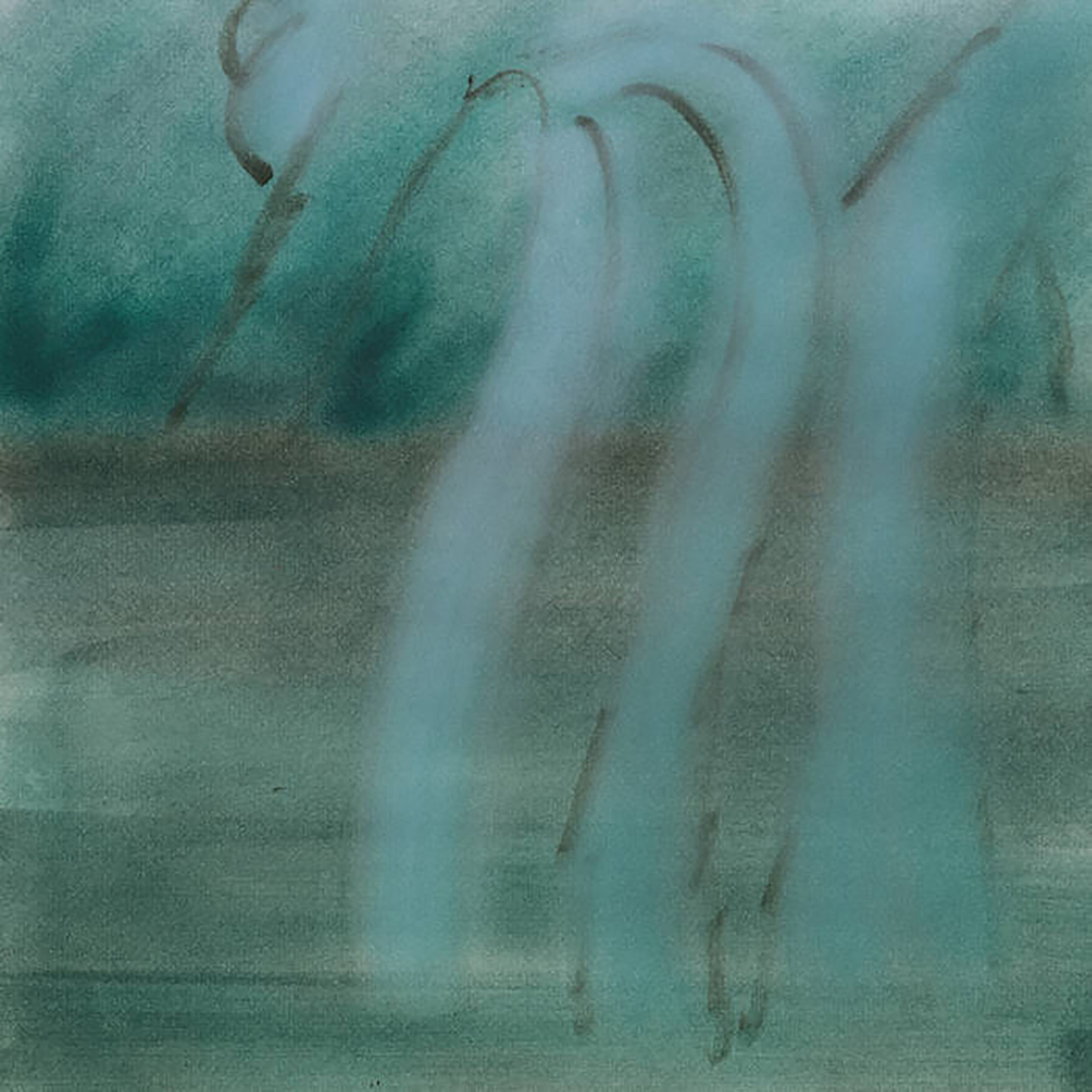 The Students of Decay label has had an impressive run of being way ahead of the curve over the years, as Alex Cobb’s imprint was responsible for the first major US releases from artists like Sarah Davachi and Natural Snow Buildings. The latest artist to be welcomed into that pantheon is Sante Fe-based composer Theodore Cale Schafer, making his vinyl debut after a handful of cassette releases and a very bizarre spoken word/conceptual album on Spain's Angoisse label. Cobb describes the album as "diaristic" and prioritizing "spontaneity and ephemerality," which seems as apt a description of Schafer's fragile, hiss-soaked vignettes as any, as the aesthetic of Patience is definitely an elusive and impressionistic one. When Schafer hits the mark just right, however, the results are strikingly beautiful, achieving a rare balance of simplicity, intimacy, and soft-focus unreality.
The Students of Decay label has had an impressive run of being way ahead of the curve over the years, as Alex Cobb’s imprint was responsible for the first major US releases from artists like Sarah Davachi and Natural Snow Buildings. The latest artist to be welcomed into that pantheon is Sante Fe-based composer Theodore Cale Schafer, making his vinyl debut after a handful of cassette releases and a very bizarre spoken word/conceptual album on Spain's Angoisse label. Cobb describes the album as "diaristic" and prioritizing "spontaneity and ephemerality," which seems as apt a description of Schafer's fragile, hiss-soaked vignettes as any, as the aesthetic of Patience is definitely an elusive and impressionistic one. When Schafer hits the mark just right, however, the results are strikingly beautiful, achieving a rare balance of simplicity, intimacy, and soft-focus unreality.
It is a bit too early for a definitive prediction at this point, but there is a decent chance that Theodore Cale Schafer has presciently tapped into an imminent new zeitgeist in experimental music.I am basing this entirely on the fact that Schafer independently wound up in roughly the same place at the same time as Sean McCann, whose Puck was just released this week.The two artists share a very similar vision of acoustic naturalism, drifting conversations, and distracted, diffuse beauty, though they are separated by a significant difference in scope: McCann composes for ensembles, while Schafer's approach has a much more homespun, "bedroom-recording" appeal.For the most part, the eight sketchlike soundscapes that comprise Patience sound like they could have been recorded on a four-track using just a guitar, a piano, and some effects pedals.There are also some moments that seem like they have been more deliberately shaped and processed, yet the bulk of the album seems rooted in loose improvisations that have been fleshed out a bit with an additional layer or two."Blue Fleece" is the only significant aberration in that regard, as Schafer combines an Oval-style skipping guitar figure with warm ambient drones and a surreal swirl of submerged-sounding field recordings.Far more representative is the opening "Gold Chain," in which fragmented and rippling guitar and piano motifs lazily intertwine in a slow dance while distant voices creep into increased prominence.
Though they sometimes take divergent shapes, all of the pieces combine to seamlessly weave an absorbing spell that feels like a dreamlike and poetic gallery of hazy memories and lingering emotional impressions.At its best, Patience evokes a languorous cascade of moments like sleepily watching swaying curtains and the play of sunlight from the comfort of a bed or blearily watching the blurred lights of a city at night from the windows of a train.I am at a loss for a memory to match Patience's most gorgeous piece, though, as "It's Late" evokes an altered state that I have yet to experience.If I had to guess, however, I would say it probably resembles being serenaded by comforting, but lysergically distorted, wind chimes after I have just collapsed in front of a remote cabin in a feverish delirium.It is an absolutely perfect and sublime piece of music and I cannot think of anyone who has done anything similar nearly as well as Schafer does it here.
The album’s other near-masterpiece is the enigmatically titled "No Piano," which weaves a gently tumbling reverie from a warmly lovely melodic fragment that woozily loops and overlaps with itself.I would not necessary describe the remaining pieces as a significant step down in quality, as they do a fine job at sustaining the album's languorous and lovely reverie, yet they tend to be a bit less distinctive.Or they merely fall short of achieving the illusion of a lazily cascading flow of memory fragments that just organically sprang into being without the intervention of instruments, amps, pedals, or tapes.In the former category, I would place the quavering ambient haze of the closing "Hinoki."The latter is best represented by "IWYWCB," which kind of resembles a lo-fi Andrew Chalk: disjointed and pointillist guitar figures bleed together and intertwine over a field recording that sounds like a train slowly approaching a desolate seaside town in the dead of night.It is a likable piece, but a fundamentally limited one: the guitars are relatively unprocessed and the central theme eventually fades away without ever evolving into anything more.  
That "unpolished spontaneity" approach is the album's only real flaw, as Schafer's endearingly loose, organic, and casual aesthetic occasionally errs on the side of undercooked: it is very easy to imagine a better version of "IWYWCB" made from the exact same notes in the exact same places, but with added processing or effects employed to wring out a bit more texture and depth.Based on the more composed and meticulously constructed work from 2017's Debt//Duet tape, however, that simplicity and lack of embellishment was very clearly a conscious decision rather than a lack of skill.It is certainly a curious decision though.I am also surprised at how understated the non-musical elements are on this album, as field and voice recordings were the primary focus of some of Schafer's earlier releases.After hearing FaceTime (2017), Patience almost seems insufficiently diaristic: Schafer went from being extremely intimate to presenting decontextualized audio fragments of his life in a very veiled and cryptic way.Somewhere between those two poles lies the kernel of more emotionally resonant album.That said, while I have some minor issues with the details of the execution, I have none at all with Schafer’s overall vision.In fact, I kind of love it, particularly "It’s Late," which is as good anything anyone has released this year (to my ears, anyway).When he is at the peak of his game, Schafer explores an extremely precarious space between form and formlessness (and chance and intention) with unerring intuition and lightness of touch and it is a damn impressive achievement.As such, Patience is an impressively strong release with some genuine flashes of brilliance.
Samples can be found here.
Read More
- Administrator
- Albums and Singles

"Steven Stapleton;s iconoclastic Nurse With Wound project now enters its fifth decade, marked with this lavish boxed set of all-new music titled Trippin' Musik. Consisting of three vinyls in dayglo orange, yellow and green, the collection comes with no tracklisting and no indication of what order in which the listener ought to listen to it."
-via Norman Records
Tentatively out November 29th on United Dirter.
Read More
- Administrator
- Albums and Singles

A 4-hour work recorded at Steamroom (O'Rourke's studio) between 2017 and 2018.
Detailed and delicate electronic layers, processed instruments, and ambiguous field recordings come together in a slow-moving, fascinating kaleidoscope with multiple reflections and wrong turns, always in constant state of flux. The finely crafted art of subterfuge.
To Magnetize Money and Catch a Roving Eye: four CDs – a hypnotic, multi-faceted, labyrinthine piece which flows as slowly as a river while speeding back through memory, and shows all the talent of Jim O'Rourke.
More information can be found here.
Read More
- Administrator
- Albums and Singles
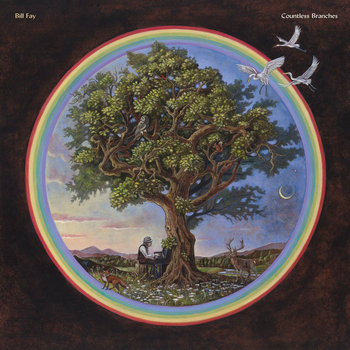
Fifty years after his debut release, Bill Fay – one of Britain's most enigmatic and celebrated singer-songwriters – returns with a new album, Countless Branches. Countless Branches will be released January 17th on CD, LP and Deluxe 2xLP, featuring artwork by Benjamin A Vierling.
Sounding more sparse and succinct than his previous records, Countless Branches collects compositions drawn from the trove of material Fay has amassed over 40 years. Unfinished songs emerge with newly written words and melodies on Fay's recurring themes – nature, the family of man, the cycle of life and the ineffable vastness of it all – as if they had been lying in wait to find their place in our current zeitgeist. The resulting ten songs are as pointed and poignant as anything he has ever recorded.
His third release for the label, alike previous acclaimed recordings Life Is People (2012) and Who Is The Sender? (2015), was produced by Joshua Henry – with the cast list slimmed down from previous sessions. Guitarist Matt Deighton remains as Fay's trusted MD and the musicians have mostly all played on Fay's albums in the past. But both Henry and Fay thought that, this time, there should be more of Bill on his own at the piano, or with minimal accompaniment.
It's at the piano, alongside some rudimentary home recording equipment, where Bill has been composing music in the intervening decades between his first and most-recent album at every chance he could get. His newest material retains the awestruck, inquisitive feel of those early songs. They often evoke landscapes, ancient and sacred places, as their author traverses the outdoors to marvel at it all. And he is doing it all from that corner of his room at the piano, while the word about his work continues to grow and spread like so many branches. For decades now, Bill Fay's songs have been his ambassadors.
While still reluctant to play live or make public appearances, Fay's resolve and his purity shine through the work and make him a special artist, finding his wider world from that corner of the room – and long may he continue to do so.
More information can be found here.
Read More
- Administrator
- Albums and Singles
"Mechanosphere is Cam Deas' abstract yet poignant second album exploring ideas of rhythmic dissonance and head-spinning proprioceptions for The Death of Rave. Following directly from his cultishly-acclaimed mini-LP Time Exercises, which was surprisingly deployed in Richie Hawtin's recent "CLOSE COMBINED - LIVE" mix and hailed as "Holy F#ck-What is This?!?" by Brainwashed, his new album applies rich polychromatic colour to his signature rhythmic constructions with a greatly heightened emotive traction and broader appeal while only going deeper on his radical ideas about the fundamentals of sound and composition. Big recommendation if you're into Autechre, Xenakis, Ligeti, Rashad Becker.
Using a computer-controlled modular synth, Cam takes the simple idea of layering pitches in multiple tempi to Nth degrees, resulting in a sensational and warped sense of temporality and gravity-defying physics. Effectively placing pitch on a scale in a similar way to Conlon Nancarrow's player-piano programming or even Ligeti's famous metronome experiment, Cam explores solutions to the problem of grid-locked linearity, or at least perceptions of it, by effectively ripping the rug from under electronic music convention to make his music appear as though in perpetual freefall, or a process of omnidirectional contraction/expansion that never quite resolves - always the same, ever different.
In Mechanosphere listeners effectively navigate through the music by a loose means of pattern recognition, picking out accentuated kicks and hits that pierce thru Cam's incredibly dense swells of endless metallic tone. But where his Time Exercises LP was unreservedly abstract and emotive in an alien sense, his follow-up practically sounds as though aliens have developed a form of 3D midi folk-jazz or court music for bacchanals and spiritual reasons.
From the vertiginous scale of "Ascension," thru the the jaw-dropping hyper stepper "Slip," to the controlled chaos of "Reflect, Deflect," and ultimately the deeply solemn yet discordantly lush finale of shearing metallic pitches in "Solitude," Cam offers an often shocking and ever fascinating grasp of electronic music’s potential to relate hard-to-communicate but intuitively felt ideas to the body and emotions. It's a sober but incredibly wondrous sound, and only confirms that Cam's seismic stylistic transition this decade from preeminent, post-Takoma 12-string guitar player to visionary synthesist was certainly worthwhile."
-via Boomkat
Out now on The Death of Rave.
Read More
- Administrator
- Albums and Singles

"Andy Stott's first release since 2016 and first EP since 2011, It Should Be Us is a double EP of slow and raw productions for the club, recorded this year and following on from a series of EPs that started with Passed Me By and We Stay Together early this decade.
Recorded fast and loose over the summer, these 9 tracks (8 on the vinyl) harness a pure and bare-boned energy, melodies subsumed by drum machines and synths; slow, rugged abandon. It is all about rhythmic heat and disorientation, pure dance and DJ specials rendered at an unsteady pace, from percolated house and percussive rituals to moody tripped-out burners.
There will be a new Andy Stott album in 2020, but in the meantime... this one’s for dancing."
-via Boomkat
Out now on Modern Love.
Read More
- Administrator
- Albums and Singles
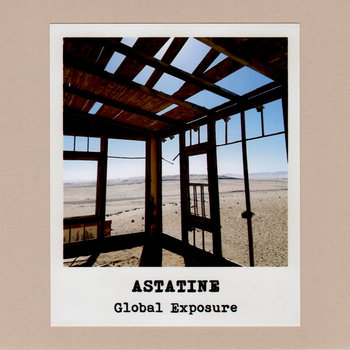
Sound In Silence is happy to announce the addition of Astatine to its roster of artists, presenting his new album Global Exposure.
Astatine is the solo project of Stéphane Recrosio, based in Paris, France. For about two decades Recrosio is better known as member of the post-rock/slowcore band Acetate Zero with whom he has done several sublime releases on labels such as Arbouse Recordings, Intercontinental, Claire’s Echo, Drumkid Records and others, and shared the stage with The Album Leaf, Encre, Empress, Rothko, The New Year and Chris Brokaw, among others. Since 2011 Astatine has released numerous albums, EPs and singles on labels such as Cotton Goods, Cantos Propaganda, [A…]UTOPROD, Éditions Vibrisse, Doubtful Sounds and Recrosio’s own labels Orgasm and Fissile.
Global Exposure, Astatine’s new full-length album and first for Sound In Silence, features twenty new compositions with a total duration of something more than 46 minutes. Utilizing fuzzy electric guitars, delicate acoustic guitar arpeggios, mumbled and distorted vocals, minimal bass lines, rough drums, heavily processed found sounds, loops of abstract noises and field recordings, Recrosio creates one of his finest works to date. The album also features Laurent Box, Recrosio’s bandmate in Acetate Zero, who contributes on two tracks, while George Mastrokostas (aka Absent Without Leave) expertly did the mastering, highlighting the album’s lo-fi sounds, balanced by the tape hiss of old 4 and 8-track recorders.
Bringing together influences from lo-fi, post-rock, shoegaze and experimental, Global Exposure is an album full of noisy soundscapes and ambient interludes, reminiscent of Acetate Zero and the early works of Hood, Sebadoh and Guided By Voices.
More information can be found here.
Read More
- Administrator
- Albums and Singles
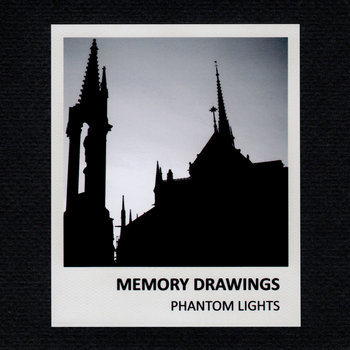
Sound In Silence is proud to welcome Memory Drawings to its family, presenting their new mini album Phantom Lights.
Memory Drawings is an Anglo/American collective led by Minneapolis-raised, Casablanca-based hammered dulcimer player Joel Hanson (Judgement Of Paris), alongside guitarist/multi-instrumentalist Richard Adams (Hood, The Declining Winter, Western Edges), violinist Sarah Kemp (Lanterns On The Lake, Brave Timbers), pianist Gareth S Brown (Hood) and multi-instrumentalist Chris Cole (Movietone, Manyfingers). Since 2012 they have released three albums and two EPs, all praised by critics, on labels such as Second Language, Hibernate Recordings, Zozaya Records and their own Signal Records.
Phantom Lights, originally self-released by the band last year as a very limited tour CD and now getting a wider release by Sound In Silence, is a short form album that moves on from the marvellous sweeping The Nearest Exit album with a pick and mix example of what this band are good at. Memory Drawings continue to manipulate their dulcimer, guitar and violin sound into inventive new shapes and on the title track create their most vibrant moment yet. As on their latest album, the band's sonic palette is more expansive and unpredictable than their first two albums and after the addition of the polyrhythmic drumming and extra instrumentation from Chris Cole, they are now also joined by Yvonne Bruner (Big Hat) who provides some ethereal vocals on the last track of this mini album.
Phantom Lights consists of six tracks with a total duration of about 25 minutes. Four of them are new and unreleased, one is getting a release in physical format for the first time, as so far it was only available as a download on an older digital EP, and as with all their previous releases a remix is also included, this time from brilliant Bristol-based electronic composer Barnaby Carter.
Carefully mastered by Antony Ryan (ISAN) in Denmark, Phantom Lights is a perfect mix of post-rock, folk and modern classical, highly recommended for devotees of Pygmalion-era Slowdive, Hex-era Bark Psychosis, Tortoise, Rachel’s and of course mid period Hood recordings, Brave Timbers and Manyfingers.
More information can be found here.
Read More
- Administrator
- Albums and Singles
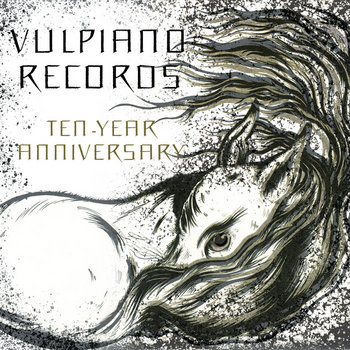
Netlabel Vulpiano Records is celebrating its 10th anniversary with a cassette tape compilation as a benefit for nonprofit digital library Internet Archive (archive.org). Limited to 100 copies and featuring exclusive and favorite tracks from the label's international roster of artists from Australia, England, France, Italy, Japan, Portugal, Russia, Spain, and the USA. Each cassette is hand-numbered and comes with either a holographic tarot card (78 copies) or an Artist Trading Card collage on a playing card (22 copies), selected randomly. The genre-spanning release celebrates the musically diverse and collaborative spirit of the long-running label with selections in drone, folk, electronic, and more.
For a label founded on a Creative Commons ethos, Internet Archive has long been an indispensable host for Vulpiano: a place for our artists' work to be free to download, share, copy and redistribute.
The tape features drone / folk duo Natural Snow Buildings' first track since the 2016 release of Aldebaran: "Charles Thomas Tester". (Cassette exclusive)
Vulpiano Records logo art by Solange Gularte of Natural Snow Buildings.
Album layout and logo edit by Marilyn Roxie.
Playing card collages by Dan Shea and Marilyn Roxie.
More information can be found here.
Read More
- Administrator
- Albums and Singles
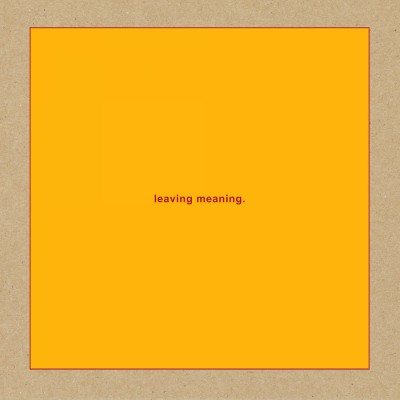 Michael Gira may have announced that Leaving Meaning would feature Swans continuing in a different form after closing the book on The Glowing Man in 2016. The change has been comparably more subtle than the stylistic shifts of the band throughout their nearly 40 year career, but the progress is distinct. This record draws not only from the recent albums, but also Gira's work with the interim Angels of Light project as well. The album is the perfect blend of the past and the recent, but looks direction to the future as well.
Michael Gira may have announced that Leaving Meaning would feature Swans continuing in a different form after closing the book on The Glowing Man in 2016. The change has been comparably more subtle than the stylistic shifts of the band throughout their nearly 40 year career, but the progress is distinct. This record draws not only from the recent albums, but also Gira's work with the interim Angels of Light project as well. The album is the perfect blend of the past and the recent, but looks direction to the future as well.
The most significant difference between this album and the recent Swans catalogue is essentially Gira dialing back the intensity both in arrangements and performance.This is abundantly clear on a song such as "Annaline":shimmering accents drift above sparse piano and acoustic guitar, with Gira's vocals front and center.The sound is rather consistent with what he was doing with The Angels of Light in the early part of the 2000s:stripped down folk-y ballads with an experimental undercurrent throughout.On "What is This?," Swans go a bit further, melding those folk elements into an almost 1960s pop number that is brilliant, and somewhat out of character.
The folk sound should not come as a surprise, because many of the band members from Angels of Light are present.The core band here is Kristof Hahn on guitars (a member of Angels of Light as well as recent Swans), drummer Larry Mullins, who played with Angels of Light, and bassist/keyboardist Yoyo Roehm.There are also a significant number of guest appearances, and while this is nothing new for a Swans record, the list is particularly expansive.Most notably is a slew of Angels of Light and Swans collaborators:Thor Harris, Christopher Pravdica, Dana Schechter, Phil Puleo, Paul Wallfisch, and Norman Westberg, who still contributes some guitar.Both Anna and Maria von Hausswolff supply choral vocals, and "The Nub" is a completely different line-up, featuring The Necks and Baby Dee on vocals.
Structure and composition is another point where Leaving Meaning departs from the recent works.For one, a quick scan of the song lengths show that Gira has reined things in a bit compared to The Glowing Man.There are no near-half hour songs here, and the longest ones max out around 12 minutes.This change also impacts the song structures themselves.I likened the other recent albums to a rock take on Hermann Nitsch's compositions:long, extended periods of repetition culminating is pummeling, intense outbursts of sound.
The repetition is still all over this album, but here in the more restrained context it feels more pleasantly hypnotic than tension building.At times it seems like Gira is intentionally toying with expectations of this.The reworking of "Amnesia" from 1992's Love of Life transforms the song from its original vaguely goth rock/industrial sound into an acoustic ballad.There is a symphonic build just before the chorus, but extremely short lived and quickly falls away, never giving the visceral relief it hints at.
At other times, the line between the other recent material is a bit more direct."The Hanging Man" has that oddly funky, blues lurch and mechanical repetition so prominent on The Glowing Man and The Seer, but the intensity held back a bit, even when Gira goes into full "speaking-in-tongues" mode.The same style permeates "Some New Things," which is a hypnotically repeating but conventionally rock sounding piece."Sunfucker" is another song that calls back to the last few albums, but with the von Hausswolff's choral backing vocals and Gira's layered chanting vocal delivery, the feel starts to drift into snake handling religious revival territory.
Given the relatively short time between Michael Gira's announcement of the reconfiguration of Swans and this newest release, it is not surprising that the sound is not too far removed from the sprawling trilogy of the most recent albums (The Seer, To Be Kind, The Glowing Man).The shift may not be as drastic as it was transitioning from Children of God to The Burning World, or Soundtracks for the Blind into My Father Will Guide Me Up a Rope to the Sky, but it is clear that Gira does not want to fall into a creative rut.Those recent records were great, but to have stylistically followed the same trend into a fourth double album would have been a bit too much.Leaving Meaning manages to brilliantly retain the sound, but change things around to make it sound familiar, yet entirely new and revitalized and thankfully seems to hint at more to come.
samples:
 
Read More

